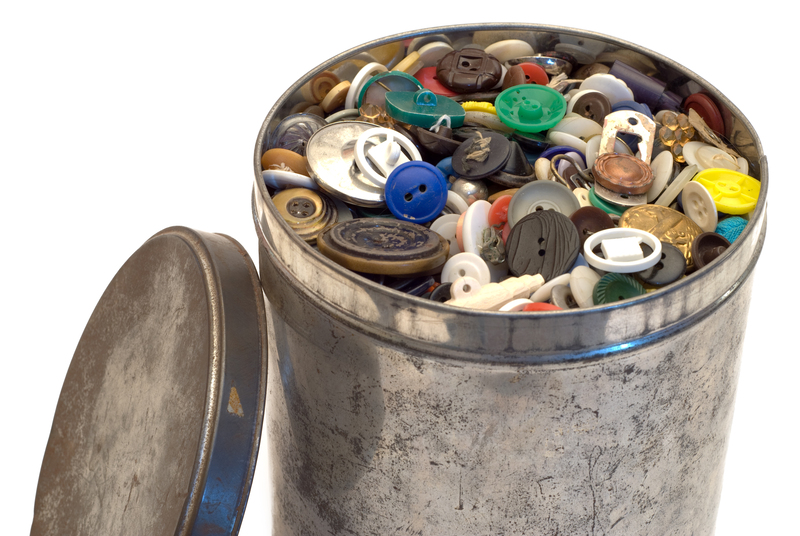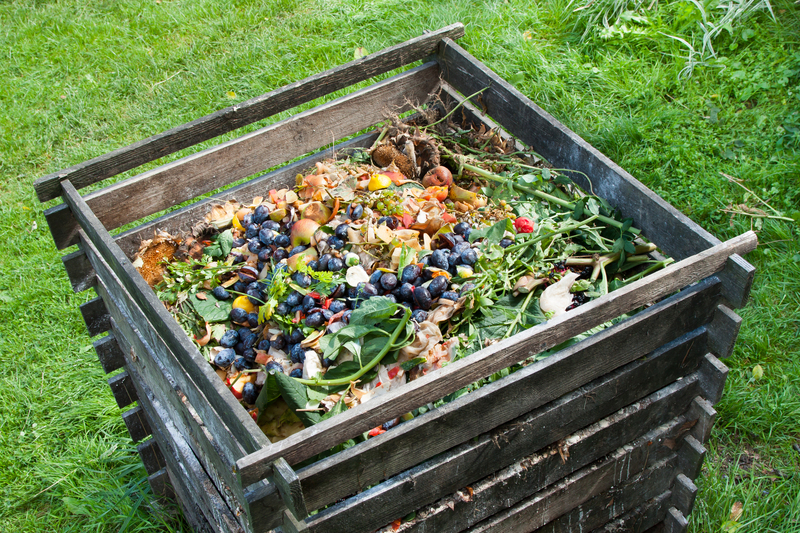Enhancing Office Recycling: Steps for a Greener Workplace
With the growing importance of sustainability and corporate responsibility, creating a greener office environment has never been more crucial. One core avenue for businesses to make a positive environmental impact is by enhancing office recycling practices. Improving office recycling not only reduces landfill waste but also lowers your carbon footprint, saves resources, and can even boost employee morale and business reputation. In this comprehensive guide, explore actionable strategies, tips, and steps to build an effective office recycling program and foster a culture of sustainability at work.
Why Prioritize Office Recycling?
Before diving into practical steps, it's essential to understand the value of office recycling and how it benefits both the organization and the planet.
- Resource Conservation: Offices consume vast amounts of paper, plastic, and electronics. Recycling these materials preserves raw resources and reduces energy consumption.
- Cost Savings: By optimizing waste management and recycling, companies can often lower garbage disposal costs and even earn from recycling certain materials.
- Compliance: Many regions require organizations to comply with specific recycling laws. Enhancing your office recycling ensures regulatory compliance.
- Employee Engagement: Environmentally responsible workplaces often have more motivated staff who value ethical practices.
- Brand Image: Consumers and clients increasingly prefer companies committed to sustainability and environmental practices.

Assessing Your Office's Current Recycling Situation
The journey to a greener workplace begins by analyzing existing waste management and recycling efforts. Here's how to get started:
1. Conduct a Waste Audit
_A waste audit allows you to identify the types and volumes of waste generated in your office._ Involve your operations or facilities team to:
- Sort and measure trash from different departments.
- Identify materials that can be recycled but are currently being wasted.
- Examine contamination in recycling bins (e.g., food waste in paper bins).
2. Map Waste Streams
_Determine where your recyclable waste is coming from and where it ends up._ This helps tailor bin placement and collection practices for maximum impact.
Setting Up an Effective Office Recycling Program
After assessing your current situation, it's time to create a structured recycling program for your workplace. Follow these essential steps to ensure a successful and sustainable initiative:
Step 1: Designate a Green Team
Form a dedicated 'Green Team' or sustainability committee consisting of employees from various departments. Their responsibilities include:
- Promoting the office recycling initiative
- Organizing educational campaigns
- Monitoring progress and collecting feedback
Step 2: Provide Appropriate Recycling Bins
Install clearly labeled recycling containers in accessible locations like kitchens, break rooms, print areas, and near printers or copiers. Consider color coding bins:
- Blue for paper
- Green for glass and plastics
- Yellow for cans and metals
- Red or black for non-recyclable waste
Labels should be specific--for example: "Mixed Paper Only" or "Bottles and Cans".
Step 3: Educate and Engage Employees
A successful office recycling initiative hinges on employee participation. _Host interactive workshops, circulate informative emails, and create posters or infographics to:_
- Show what materials go into each bin
- Highlight the importance of rinsing containers
- Raise awareness about the impact of contamination
- Explain how recycling benefits the organization and the environment
Step 4: Partner with Reliable Recycling Vendors
_Work with certified local recycling services experienced in handling office waste streams._ Discuss how to optimize waste collection schedules and maximize recycling rates. Ask about e-waste recycling for old electronics and secure shredding for confidential documents before recycling.
Step 5: Integrate Reduction and Reuse Principles
Recycling is just one part of responsible waste management. Encourage reducing and reusing materials as well:
- Set printers to duplex (double-sided) printing by default
- Provide reusable mugs and dishware in break rooms
- Encourage digital documentation instead of paper files
- Reuse office supplies like folders, binders, and envelopes
Advanced Strategies to Boost Office Recycling Rates
1. Conduct Regular Recycling Training
Frequent training updates keep recycling front-of-mind for staff and prevent bad habits. Consider inviting local sustainability experts to address employees or arrange facility tours to local recycling centers.
2. Monitor Progress with Metrics
Track how much waste is recycled and diverted from landfill each month. Share these results with the team to inspire continued improvement and celebrate successes.
3. Incentivize and Gamify the Program
Introduce friendly competitions between departments with prizes for the most improved recycling rates or the cleanest bins. Recognition programs help maintain enthusiasm for eco-friendly habits.
4. Optimize Office Layout
Review bin locations periodically and move them to high-traffic areas to encourage proper sorting and higher recycling rates.
5. Expand Your Program to Include E-Waste, Batteries, and Toner
Many offices generate substantial electronic and hazardous waste, such as batteries or printer cartridges. _Partner with specialized recyclers to safely and responsibly handle these items._
What Offices Should and Shouldn't Recycle
Common Recyclables in Offices:
- White and colored paper
- Newspapers and magazines
- Cardboard
- Aluminum cans
- Plastic bottles (check local guidelines for types)
- Glass bottles and jars
Items Not Typically Accepted in Office Recycling:
- Food-contaminated paper (like pizza boxes)
- Styrofoam products
- Plastic bags (unless specified)
- Drinking straws
- Coffee pods and single-use cups (unless specifically recyclable)
- Batteries and e-waste (should use specialized recycling)
*Check with your local waste management provider for specifics, as accepted materials can differ regionally.*
Common Challenges and How to Overcome Them
Even the most committed organizations face roadblocks when trying to enhance office recycling workflows. Here's how to address frequent issues:
- Confusion Over Recycling Rules: Provide clear, simple signage--visual aids work better for quick identification.
- Contaminated Recycling Streams: Run regular "lunch and learn" sessions explaining why contaminants, like food or liquids, ruin recycling loads.
- Lack of Employee Buy-In: Involve employees early in program design and be transparent about positive results to build engagement.
- Irregular Collection: Work closely with vendors to align pickup schedules and avoid overflowing bins.
Innovative Technologies for Smarter Office Recycling
Today's digital tools can further enhance sustainable office recycling systems:
- Smart bins with sensors that notify custodial teams when full
- Digital dashboards tracking recycling data and hotspot identification
- Mobile apps to report recycling issues or access recycling tips instantly
Investing in technology demonstrates commitment and simplifies recycling workflows for large offices.
The Role of Leadership in Green Workplaces
Buy-in from management is crucial for lasting improvements in office recycling and workplace sustainability. Leadership can:
- Integrate recycling into corporate social responsibility (CSR) policies
- Formally recognize and reward teams for green initiatives
- Commit to broader sustainability goals and publish progress reports
Setting an example--such as using reusable bottles at meetings or speaking about sustainability at internal events--encourages others to follow suit.
Building a Culture of Sustainability
To truly enhance office recycling, organizations must look beyond bins and signage. Fostering a green culture involves:
- Making sustainability part of onboarding new employees
- Encouraging team-led eco-initiatives, like tree planting or community clean-ups
- Partnering with suppliers who share eco-friendly values
- Celebrating environmental events (Earth Day, World Environment Day)
- Regularly revisiting and refreshing the recycling program

Conclusion: Steps to a Greener, More Sustainable Office
Enhancing office recycling is a continuous journey rather than a one-time project. By assessing your starting point, empowering employees, installing the right infrastructure, educating your workforce, leveraging partnerships, and evolving your strategy with technology and advanced tactics, you create a workplace where sustainability is second nature.
Begin your green transformation today--your bottom line, your employees, and the planet will thank you.
FAQs: Office Recycling for a Greener Workplace
How can I make my office recycling program more successful?
Regular training, visible leadership support, clear bin labeling, and ongoing communication are key. Aim to create a culture where recycling is easy and expected.
What materials are most often overlooked in office recycling?
Many offices forget toner cartridges, e-waste, batteries, and packaging materials. Add specialized bins for these items and educate staff on proper disposal.
How do we reward employees for recycling?
Consider public recognition, green leader awards, or friendly competitions. Simple incentives go a long way in motivating sustainable behaviors.
In summary, prioritizing and enhancing recycling at the office transforms not only your environmental impact but also workplace culture and corporate reputation. Adopt these best practices today to pave the way for a greener tomorrow.